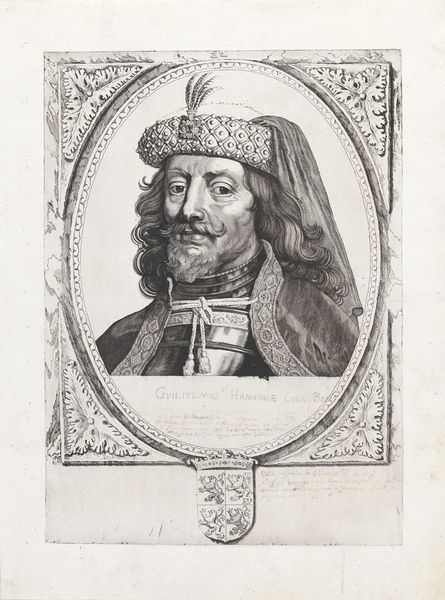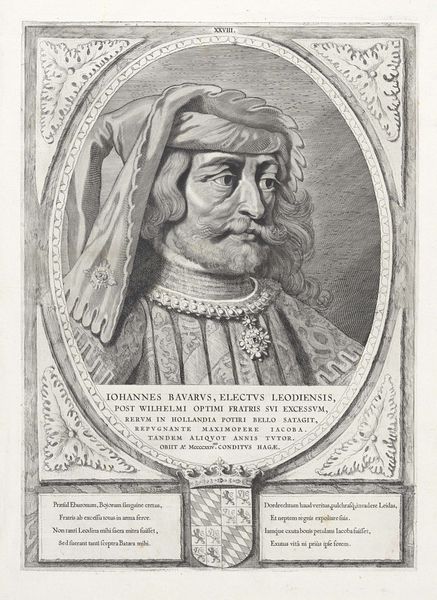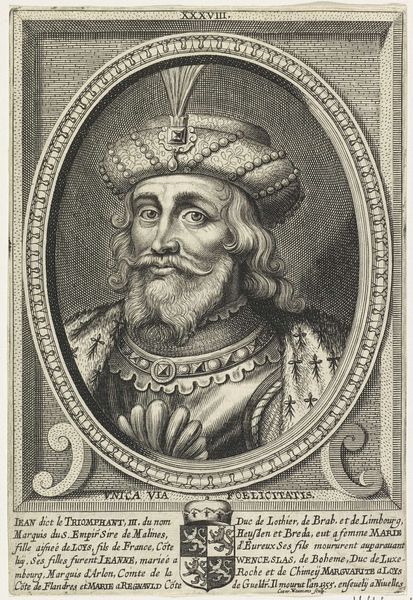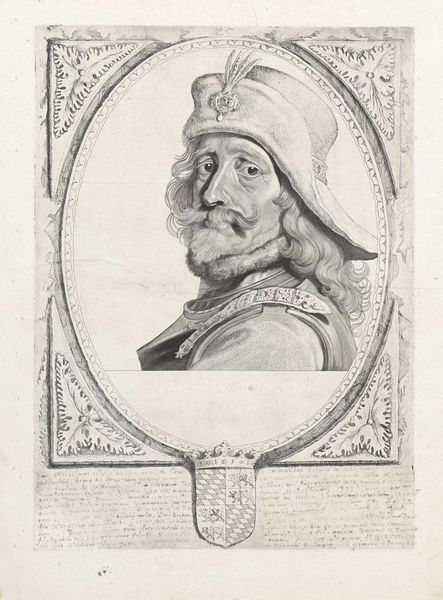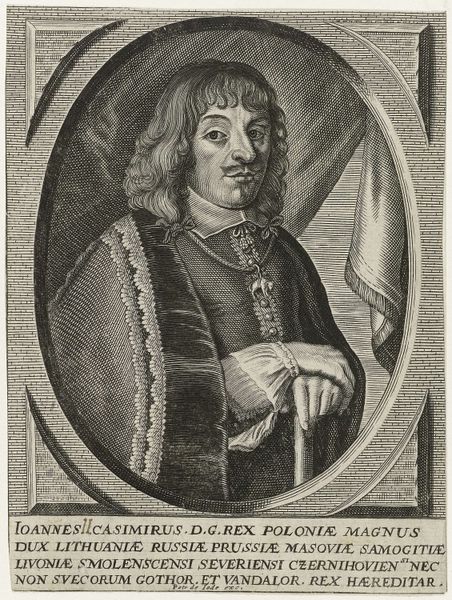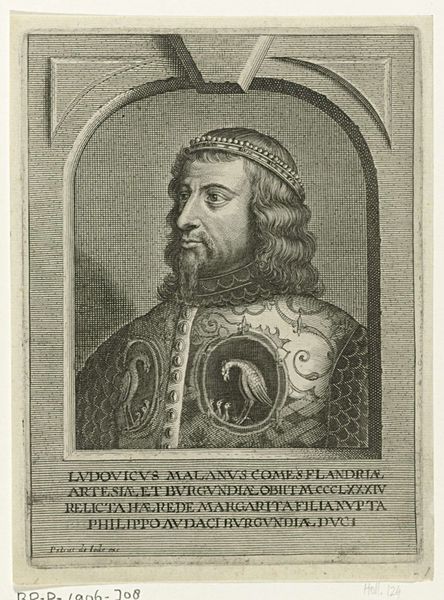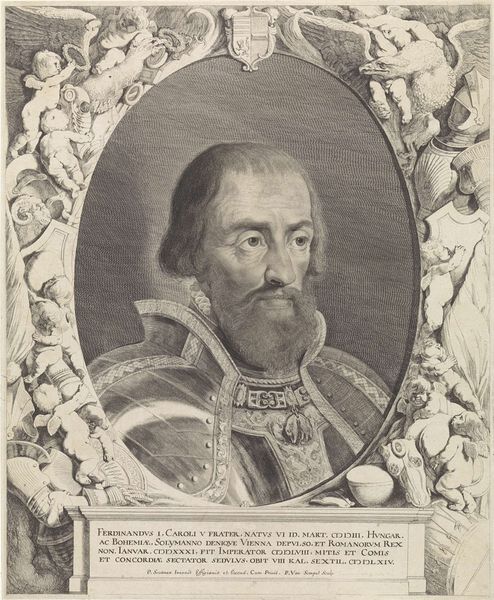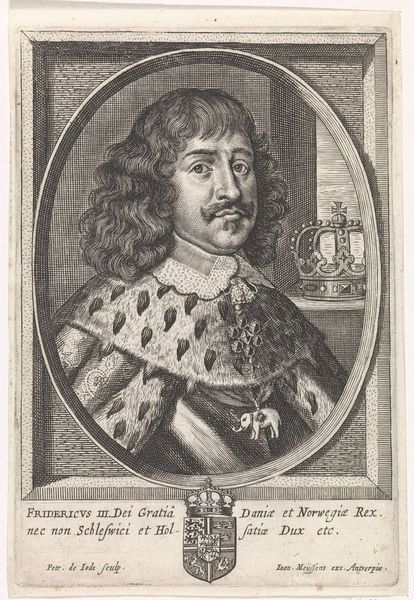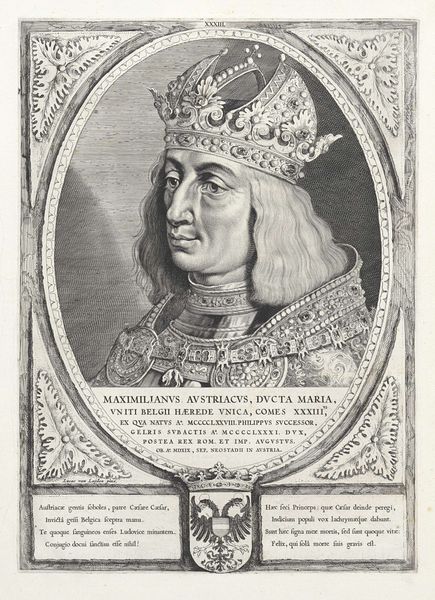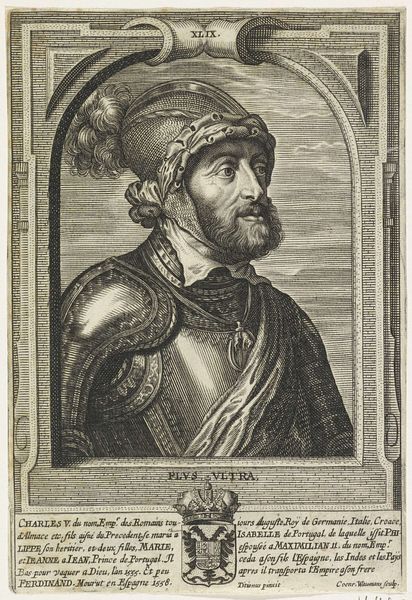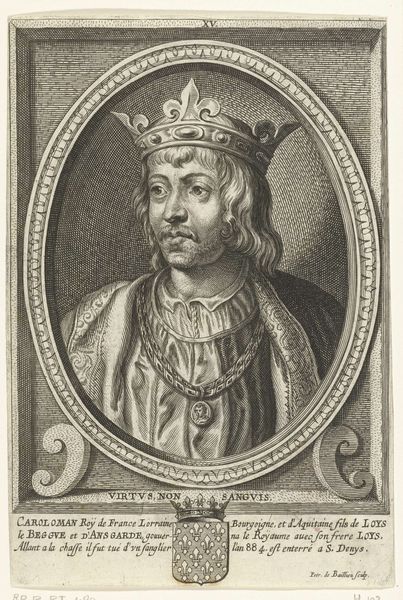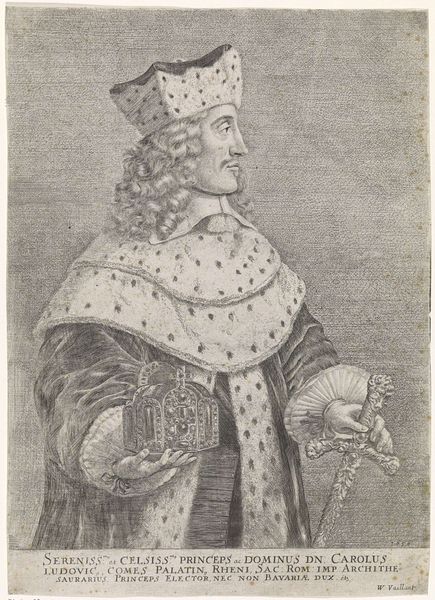
William III from the series Counts and Countesses of Holland, Zeeland, and West-Frisia 1650
0:00
0:00
drawing, print, engraving
#
portrait
#
drawing
#
baroque
#
dutch-golden-age
# print
#
engraving
Dimensions: sheet: 20 1/2 x 15 1/16 in. (52 x 38.2 cm) plate: 15 3/4 x 11 1/2 in. (40 x 29.2 cm)
Copyright: Public Domain
Editor: This is Pieter Soutman's "William III from the series Counts and Countesses of Holland, Zeeland, and West-Frisia" created around 1650. It's an engraving, which gives it this incredibly detailed, almost photographic quality. I'm struck by the formality of the portrait and all the decorative flourishes. What stands out to you? Curator: What jumps out is precisely the image’s public function. These portrait series weren’t just about depicting individuals. Soutman created this print within the Dutch Golden Age. What’s interesting is thinking about it less as a literal depiction and more as a constructed representation of power and legitimacy. Think of how visual imagery was used politically. What stories do you think the commissioners were trying to convey through prints like these, especially during a period of emerging national identity and the Eighty Years' War? Editor: So, you are saying it's less about what William III actually looked like, and more about presenting an ideal, right? Like, reinforcing his place in a line of succession and bolstering a particular image of Dutch leadership. The inclusion of text and heraldry would speak to that as well? Curator: Exactly. These prints were circulated widely. Consider who the audience might have been. How would different audiences interpret these images? It is possible to think of prints like this as pieces of political communication designed to solidify support or shape public perception during a tumultuous time? It’s like state-sponsored PR of its time, where representation becomes a key tool. Editor: It’s fascinating to consider the image as a form of political marketing. I had been more focused on its visual elements, but seeing it in the context of Dutch nation-building and political messaging provides a much richer understanding. Thank you! Curator: Precisely. These visuals really did a lot of work shaping perception and conveying power, something that, really, still rings true today.
Comments
No comments
Be the first to comment and join the conversation on the ultimate creative platform.
